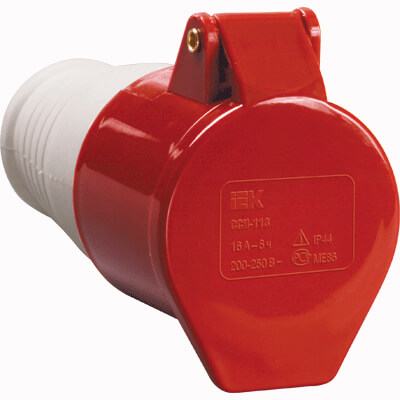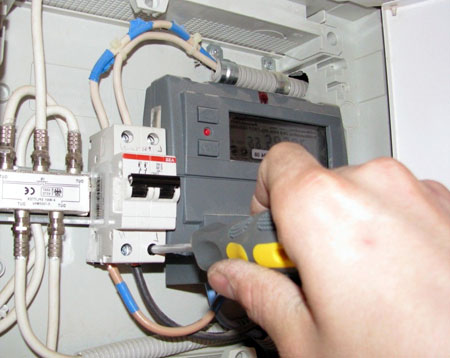Why does the outlet spark when turning on the appliance?
Inconsistency of Standards
One of the simplest causes of sparking can be considered the difference in standards between the electric plug and the outlet itself. The fact is that since the days of the USSR there were two main standards: Soviet (C) and Schuko. The difference between them in the cross section of the plug electrodes. At first glance, the difference is not too great, but at the same time, this run-up becomes the cause of loose contact between objects. If the Shuko-plug plugs firmly into the Soviet sockets, there will be no problems, but feedback can cause the socket to sparkle when the plug is turned on.

The optimal solution can be achieved by replacing the old Soviet-era wiring elements with modern standards.
Low quality
The second, no less obvious influencing factor is the low quality of products. This reason is related to cheap Chinese fittings. The assembly of products in this case is pretty bad: the contacts are loose, the metal parts are very thin, the plastic is soft, and the mounts themselves are unreliable. The result is a poor contact of the plug with the power source, from which the outlet sparks when the plug is turned on.
The solution to this problem is simple - to replace Chinese products with more expensive ones. We recommend giving preference to such manufacturers of sockets and switcheslike ABB, Legrand and Jung.
Worn wiring
The next reason for the failure of the outlet is the deterioration of the wiring in the house (or apartment).
 If the core diameter is small, then you should not connect powerful electrical appliances (for example, a microwave), otherwise the line simply will not withstand current loads, as a result of which the socket will sparkle. Here you must first do an audit of the old current-carrying line and, if necessary, carry out home wiring replacement. Correct replacement is based on calculation of cable cross-section by power and current.
If the core diameter is small, then you should not connect powerful electrical appliances (for example, a microwave), otherwise the line simply will not withstand current loads, as a result of which the socket will sparkle. Here you must first do an audit of the old current-carrying line and, if necessary, carry out home wiring replacement. Correct replacement is based on calculation of cable cross-section by power and current.
Loosened screw clamps
Any collapsible product tends to wear out over time. All screws, latches, springs are unscrewed and loosened over the entire period of operation. The result is, again, a poor contact of the electrodes with the network, as a result of which you can see how the socket sparks by itself (without plugging in the plug).
If the wiring is represented by aluminum conductors, then the screw clamps must be tightened several times a year, because aluminum tends to leak, resulting in a weakening of the contact from which it begins to spark. The connectors themselves, where the plug is inserted, can also be worn out. Fixing of the plug occurs with the help of special clamping jaws, which with frequent connection / disconnection are unbent. In this case, you need to bend them with pliers.
These two reasons are the most popular, and if sparking is detected in time, the situation can be saved by ordinary repairs. If you have already disassembled the outlet, carefully review all the other structural elements: perhaps somewhere else intervention will be required.
Current overload
Another, no less commonplace reason that the outlet sparks is inattention when buying a new device. Each product has its own letter marking, as shown in the photo below. The rated current must be indicated on the case (for example, 16 A). This means that the current load from electrical appliances should not exceed 16 amperes. Otherwise, problems may arise, including arcing of the product when plugs are inserted into it. If you connected the sockets to each other with a loop and noticed that one of them heats up when you remove or turn on the plug, then the wiring was incorrect (for example, you chose a too small cross-section of wires or tightened the loop). It is advisable not to connect adjacent sockets, but to do branch wire to each electrical point from the junction box.
To choose the right electrical fittings, remember the following calculation: 1 amp can withstand no more than 220 watts of power. In total, a 16-amp device can withstand approximately 3.5 kW, which is quite enough for washing machine installation or an electric boiler.
Immediately, several important points should be noted. If you buy, for example, a double outlet and 16A is written on it, this does not mean that each socket can withstand such a current. In this case, the rated current is divided into both sockets. The second, no less important point - consider the current parameter when connecting the extension cord. Very often people connect carrying 5 outputs, each of which runs a powerful electrical appliance. If the power exceeds the maximum possible - the product will begin to spark and quickly fail!
How to avoid problems?
Above, we have provided the main reasons why the socket sparks when the plug is turned on and how to repair the product yourself. Now I wanted to talk about how to avoid these problems, and in other words - about preventive measures.
- At least once a year do an audit electrical wiring. A visual inspection will help prevent trouble in time.
- Inserting and removing the plug should only be done with the power to the appliance turned off. The course of action is as follows (for example, a TV): we connect to the network, turn it on with the button and vice versa - turn it off with the button, disconnect from the network.
- Install on the outlet line circuit breaker, which will prevent current overloads and save not only the source of the mains, but also household appliances.
- In humid rooms (for example, a bathroom or a bathhouse), install only waterproof devices.
What could be the consequences?
If you do not find in time that the outlet sparks on its own or is heating up, then the result can be disastrous consequences. First, the plastic case will begin to melt, at the same time, the contact will slowly burn out. In the future, ignition of the wiring will occur, which will cause a fire.
Besides this, no one is excluded from electric shock and short circuit, the harm of which can be quite large-scale.
That's all I wanted to say about what to do if the socket sparks when turning the plug on and off. It is imperative that before starting repair work you must de-energize the room so as not to get an electric shock. We hope that the information was useful to you and was used only for self-development.
Related materials:






